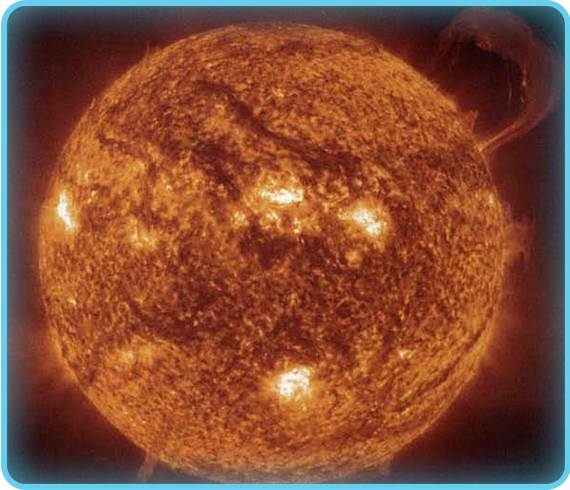Earth’s Seasonal Cycle
Think Like a Scientist
All planets in our solar system, including Earth, move around the Sun. Earth orbits the Sun in about 365 days. As Earth travels around the Sun, it leans at an angle. That means different parts of Earth are closer to the Sun at different times of the year. The part of Earth that is leaning toward the Sun receives more daylight hours and warmth than does the rest of Earth. Seasons are created by the amount of light and warmth that certain areas of Earth receive from the Sun during the year.
 |
|
The Sun, shown here, creates a huge amount of light and heat. Even though it is 93 million miles (150,000,000 km) away from
Earth, it still provides enough light and heat to make life possible on Earth. View Larger Image
|
|
Courtesy of SOHO (ESA & NASA)
|





